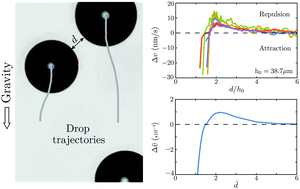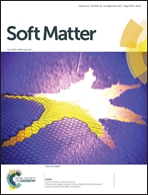Dynamical theory of the inverted cheerios effect
Abstract
Recent experiments have shown that liquid drops on highly deformable substrates exhibit mutual interactions. This is similar to the Cheerios effect, the capillary interaction of solid particles at a liquid interface, but now the roles of solid and liquid are reversed. Here we present a dynamical theory for this inverted Cheerios effect, taking into account elasticity, capillarity and the viscoelastic rheology of the substrate. We compute the velocity at which droplets attract, or repel, as a function of their separation. The theory is compared to a simplified model in which the viscoelastic dissipation is treated as a localized force at the contact line. It is found that the two models differ only at small separation between the droplets, and both of them accurately describe experimental observations.



 Please wait while we load your content...
Please wait while we load your content...